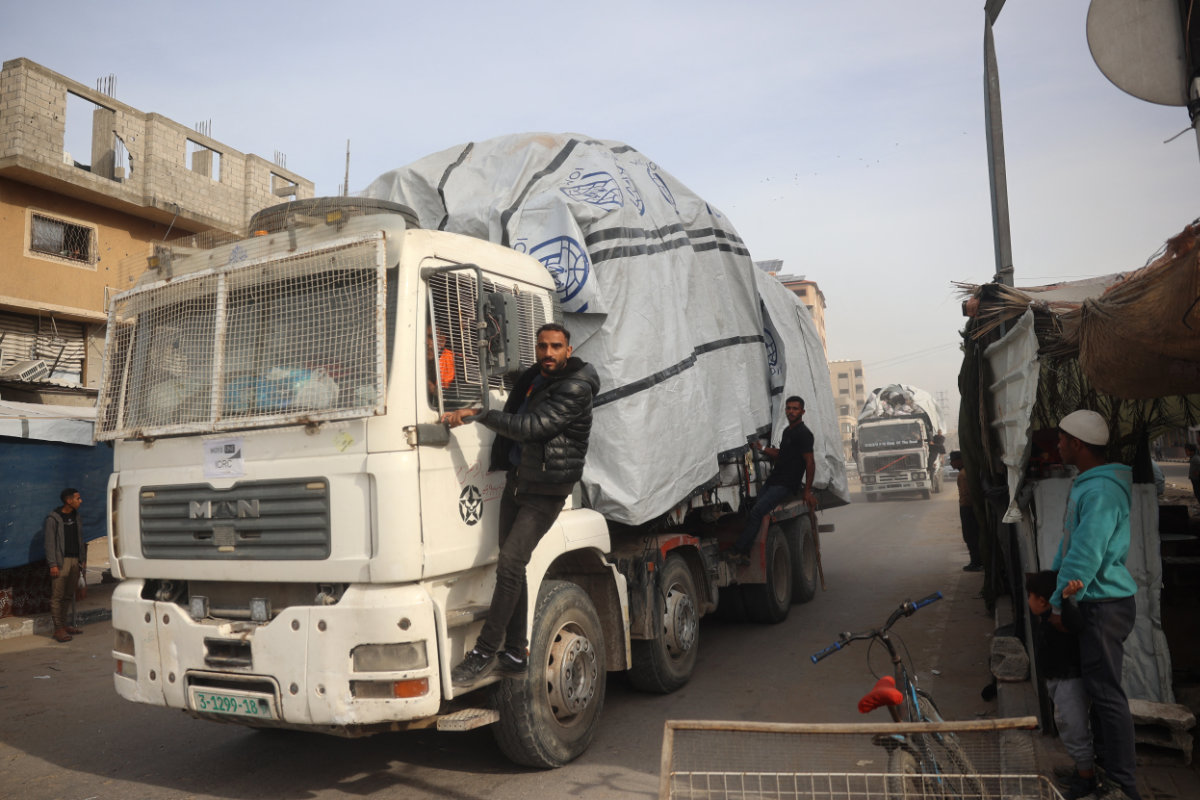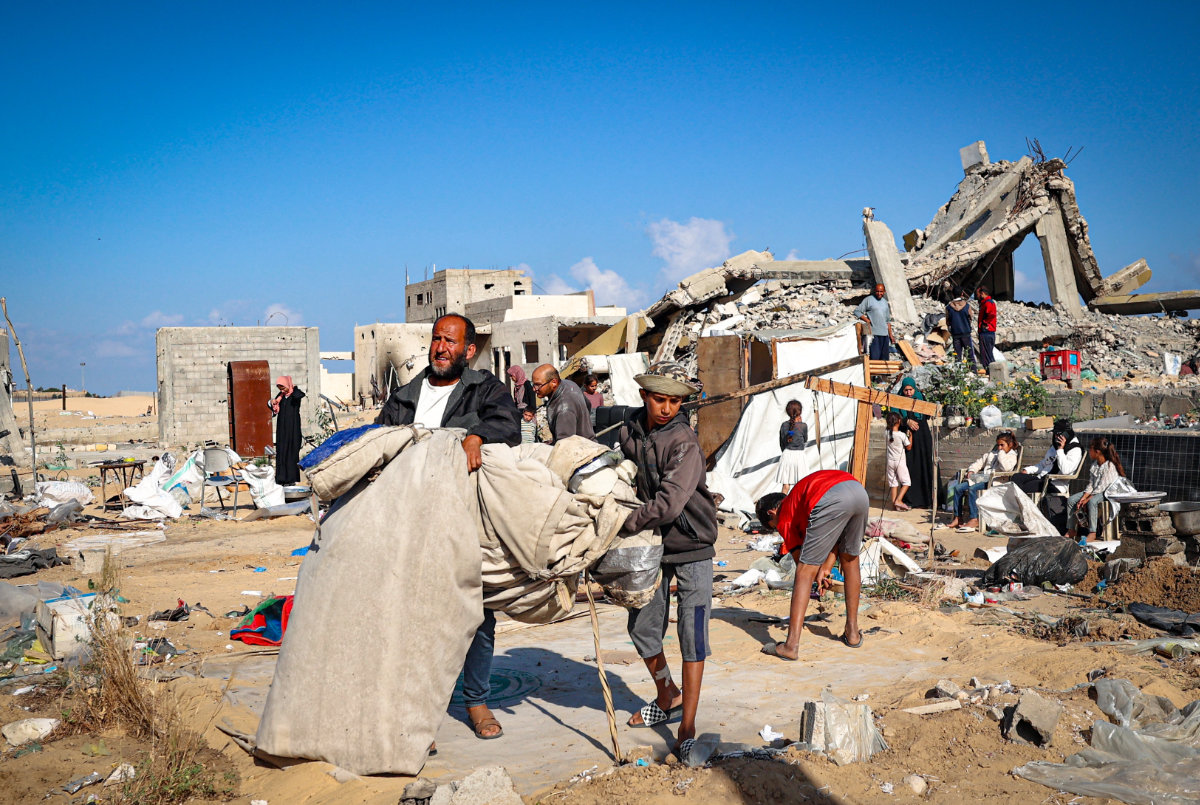BEIRUT: Since Israel launched its ground invasion of Lebanon, Israeli forces and Hezbollah militants have clashed along the border while the Lebanese army has largely stood on the sidelines.
It’s not the first time the national army has found itself watching war at home from the discomfiting position of bystander.
Lebanon’s widely beloved army is one of the few institutions that bridge the country’s sectarian and political divides. Several army commanders have become president, and the current commander, Gen. Joseph Aoun, is widely regarded as one of the front-runners to step in when the deadlocked parliament fills a two-year vacuum and names a president.
But with an aging arsenal and no air defenses, and battered by five years of economic crisis, the national army is ill-prepared to defend Lebanon against either aerial bombardment or a ground offensive by a well-equipped modern army like Israel’s.
The army is militarily overshadowed by Hezbollah. The Lebanese army has about 80,000 troops, with around 5,000 of them deployed in the south. Hezbollah has more than 100,000 fighters, according to the militant group’s late leader, Hassan Nasrallah. Its arsenal — built with support from Iran — is also more advanced.
A cautious initial response
Israeli forces and Hezbollah fighters have been clashing since Oct. 8, 2023, when the Lebanese militant group began firing rockets over the border in support of its ally Hamas in Gaza.
In recent weeks, Israel has conducted a major aerial bombardment of Lebanon and a ground invasion that it says aims to push Hezbollah back from the border and allow displaced residents of northern Israel to return.
As Israeli troops made their first forays across the border and Hezbollah responded with rocket fire, Lebanese soldiers withdrew from observation posts along the frontier and repositioned about 5 kilometers (3 miles) back.
So far, Israeli forces have not advanced that far. The only direct clashes between the two national armies were on Oct. 3, when Israeli tank fire hit a Lebanese army position in the area of Bint Jbeil, killing a soldier, and on Friday, when two soldiers were killed in an airstrike in the same area. The Lebanese army said it returned fire both times.
Lebanon’s army declined to comment on how it will react if Israeli ground forces advance farther.
Analysts familiar with the army’s workings said that, should the Israeli incursion reach the current army positions, Lebanese troops would put up a fight — but a limited one.
The army’s “natural and automatic mission is to defend Lebanon against any army that may enter Lebanese territory,” said former Lebanese Army Gen. Hassan Jouni. “Of course, if the Israeli enemy enters, it will defend, but within the available capabilities … without going to the point of recklessness or suicide.”
Israeli and Lebanese armies are ‘a total overmatch’
The current Israeli invasion of Lebanon is its fourth into the neighboring country in the past 50 years. In most of the previous invasions, the Lebanese army played a similarly peripheral role.
The one exception, said Aram Nerguizian, a senior associate with the Washington-based Center for Strategic and International Studies, was in 1972, when Israel attempted to create a 20-kilometer (12-mile) buffer zone to push back Palestinian Liberation Organization fighters.
At that time, Nerguizian said, the Lebanese army successfully slowed the pace of the Israeli advance and “bought time for political leadership in Beirut to seek the intervention of the international community to pressure Israel for a ceasefire.”
But the internal situation in Lebanon — and the army’s capabilities — deteriorated with the outbreak of a 15-year civil war in 1975, during which both Israeli and Syrian forces occupied parts of the country.
Hezbollah was the only faction that was allowed to keep its weapons after the civil war, for the stated goal of resisting Israeli occupation of southern Lebanon — which ended in 2000.
By 2006, when Hezbollah and Israel fought a bruising monthlong war, the Lebanese army “had not been able to invest in any real-world post-war modernization, had no ability to deter Israeli air power” and “was left completely exposed,” Nerguizian said. “The few times that the (Lebanese army) and Israeli forces did engage militarily, there was total overmatch.”
International aid has been a mixed blessing
After the 2011 outbreak of civil war in neighboring Syria and the rise of the Islamic State militant group there, the Lebanese army saw a new influx of military aid. It successfully battled against IS on Lebanon’s border in 2017, although not alone — Hezbollah was simultaneously attacking the group on the other side of the border.
When Lebanon’s financial system and currency collapsed in 2019, the army took a hit. It had no budget to buy weapons and maintain its existing supplies, vehicles and aircraft. An average soldier’s salary is now worth around $220 per month, and many resorted to working second jobs. At one point, the United States and Qatar both gave a monthly subsidy for soldiers’ salaries.
The US had been a primary funder of the Lebanese army before the crisis. It has given some $3 billion in military aid since 2006, according to the State Department, which said in a statement that it aims “to enable the Lebanese military to be a stabilizing force against regional threats” and “strengthen Lebanon’s sovereignty, secure its borders, counter internal threats, and disrupt terrorist facilitation.”
President Joe Biden’s administration has also touted the Lebanese army as a key part of any diplomatic solution to the current war, with hopes that an increased deployment of its forces would supplant Hezbollah in the border area.
But that support has limits. Aid to the Lebanese army has sometimes been politically controversial within the US, with some legislators arguing that it could fall into the hands of Hezbollah, although there is no evidence that has happened.
In Lebanon, many believe that the US has blocked the army from obtaining more advanced weaponry that might allow it to defend against Israel — America’s strongest ally in the region and the recipient of at least $17.9 billion in US military aid in the year since the war in Gaza began.
“It is my personal opinion that the United States does not allow the (Lebanese) military to have advanced air defense equipment, and this matter is related to Israel,” said Walid Aoun, a retired Lebanese army general and military analyst.
Nerguizian said the perception is “not some conspiracy or half-truth,” noting that the US has enacted a legal requirement to support Israel’s qualitative military edge relative to all other militaries in the region.
As Hezbollah and Israel battle on the border, Lebanon’s army watches from the sidelines
https://arab.news/cnj9t
As Hezbollah and Israel battle on the border, Lebanon’s army watches from the sidelines

- Analysts familiar with the army’s workings said that, should the Israeli incursion reach the current army positions, Lebanese troops would put up a fight — but a limited one


































